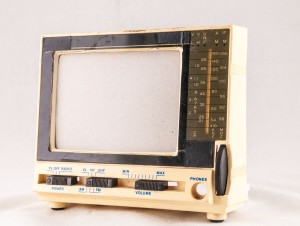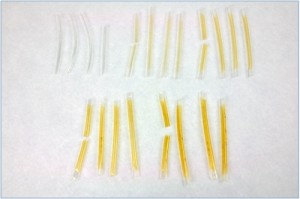
Cruising through that mega-auction website, you just saw someone paid several hundred dollars for a (now) antique video game console. Remembering you have one just like it, you dig out the box from the back of the closet and examine the game. All the parts are there, and it even works when you plug it in. There’s just one big problem that could affect the game’s value in the eyes of potential collectors — the once-white casing is now a dingy, unattractive yellow.
What happened?
Plastic’s longevity is one of the qualities that makes it such a useful material — and one of the reasons why we try to keep it out of landfills and waterways. Most plastics (polymers) are pretty stable and durable. But plastic isn’t perfect. Over time, it can change color (which is what happened to your game console) or become brittle.
When either effect occurs, it can change the way the plastic behaves in real life, and the product made from the polymer may no longer do what it was intended to. Those plastic bubble skylights from the 1970s were a good example of this effect — with age, the plastic turned yellow and the skylights leaked!

A couple of years ago, the Polymer Solutions team investigated a situation in which polyurethane medical tubing, designed to be clear, turned yellow and failed well before it should have. Since part of the tubing was meant to remain outside the patient’s body, the discoloration and failure were particularly worrisome. In other applications, failure of a medical device could even be life-threatening.
Polymers can have problems for a number of reasons, but when the trouble involves a color change, UV exposure is one of the first suspects we examine. The ultra-violet spectrum of light doesn’t play well with most polymers — unless, of course, you add light stabilizers, but we’ll get to that in a moment. Exposure to UV radiation can cause plastics to change color (turn yellow), crack, break, shatter or even melt! We have multiple analytical techniques that can determine if UV exposure has caused changes in a polymer, one of which is accelerated UV testing.
The testing helps us understand if a polymer or plastic is absorbing too much UV, and make suggestions for additives that can address the problem. Depending on the issue and the intended use of the polymer, the manufacturer may add a UV-absorbing stabilizer, a quencher or HALS, which trap free radicals formed by exposure to UV radiation and prevent them from causing damage.
Of course, UV radiation isn’t the only factor that can cause plastics and polymers to age. Exposure to visible light, extreme temperatures, humidity or exposure to solvents can also cause a polymer to fail over time. When it comes to yellowing, however, UV light is often the primary culprit.
Getting back to your game console, it probably sat atop your TV for years — catching some rays — before you packed it away. Even though it’s been sitting in darkness for a while, the damage was already done and yellowing occurred. UV radiation was also the source of the yellowing in the case of the medical tubing failure. It turns out the patient was an avid sunbather, so the tubing got a much higher dose of UV rays than the manufacturer anticipated.
